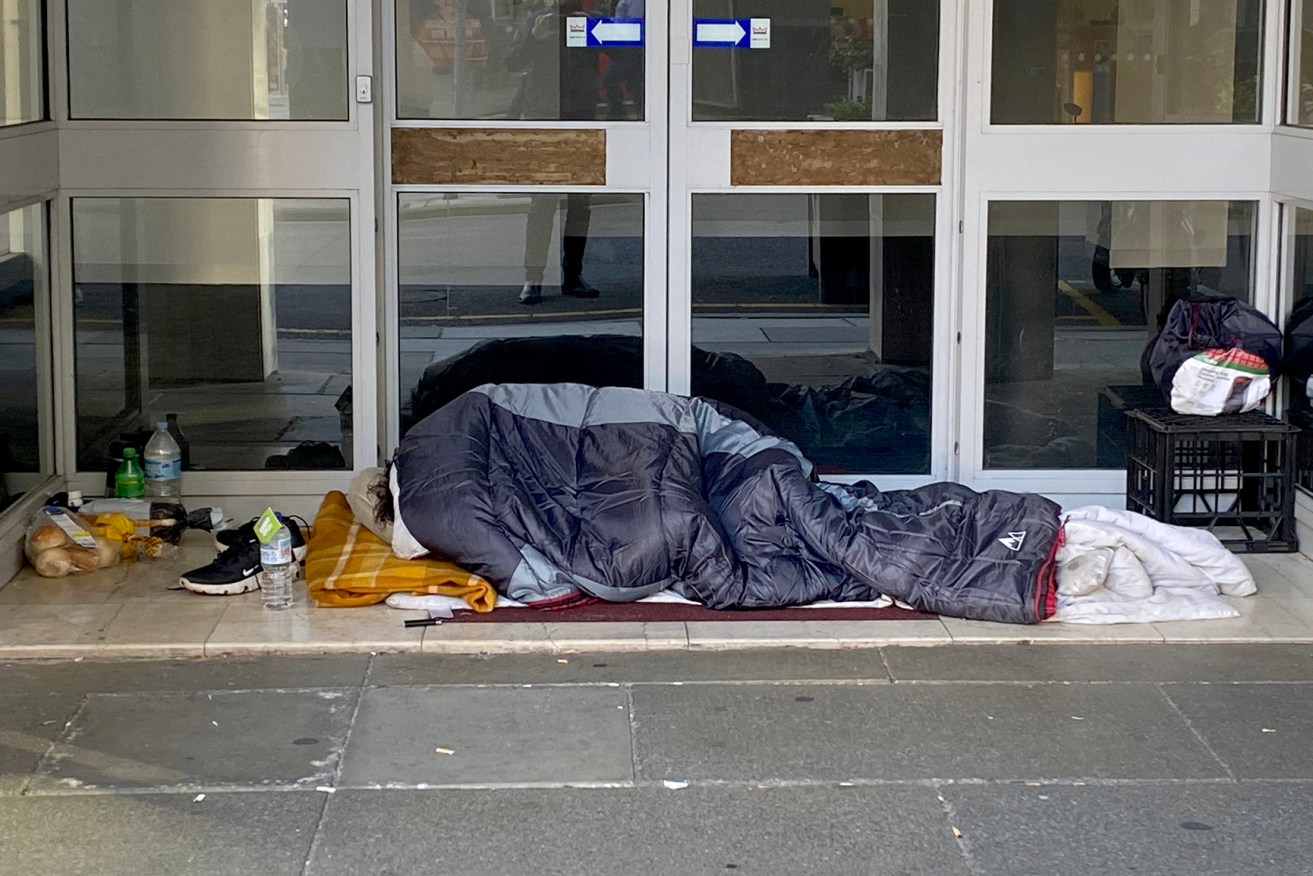Some home truths about homeless services and funding
The Marshall Government’s homeless sector shake-up has stripped funding from a range of established city services. Louise Miller Frost explains how the system changed, and the impact upon her agency’s services, staff and homeless clients as winter approaches.

Photo: Tony Lewis/InDaily
Ending homelessness is a wicked problem that has vexed and continues to vex countries across the world.
People fall into homelessness for many reasons – poverty is almost always a factor. When a crisis hits, having access to funding gives you options. Other factors included physical and mental health, job loss, relationship breakdown, drug and alcohol dependency, and any form of trauma that diminishes someone’s ability to cope and make good decisions for themselves.
There are as many complex reasons for what tips people into homelessness as there are individuals experiencing homelessness. At the last census (2016) that was over 6000 people across SA and over 120,000 in Australia – and possibly higher now.
Responses are often a combination of the not-for-profit sector and government working in partnerships to try to address the complex needs of each individual, while finding them a permanent housing option. Services are a mix of crisis accommodation, physical and mental health services, rehabilitation, employment services, legal services and sometimes just someone to help them with this tough journey of life.
We know that providing someone with a social house and full service provision is on average $13,000 a year cheaper than the cost of keeping them on the streets.
So it makes economic sense as well.
The SA Housing Authority (SAHA) has recently undertaken a significant reform process across SA, the result being announced last week.
Almost all contracts for homelessness services ending 20 June 2021 were retendered. The tenders were sought in an Alliance (consortia) model, thereby reducing SAHA’s contract management requirements to five lead agencies, and pushing the cost of contract management out into the sector for the lead agencies to absorb.
The City South Regional Alliance – which includes the CBD providers involved in the Adelaide Zero Project – was the only region with a competitive bid process. Two consortia bid for the same contract. Only one can win of course, and for those agencies who are facing being defunded after decades of service developing expertise in supporting people experiencing homelessness, it is devastating. This includes Vinnies Men’s Shelter, which houses 47 men in crisis accommodation every night of the year.
We have had the sad task of meeting with staff, men and women who have dedicated their lives to supporting people in distress, to tell them that jobs will end on 30 June. These are not glamorous, well-paid jobs; these people are here because of their dedication to making a difference to their community, to make a difference for those less well off than they are.
Many of them work night shift on rotating rosters – which is hard work – responding with compassion to people’s crises as they arise, soothing fears, providing shelter, food and support. Their care and interest, their resilience in staying with their clients through the difficult times, helping resolve each problem until they are able to rebuild their lives, is admirable.
At this stage we do not know what the new model is, or what the transition plan is. Our clients often have complex, chaotic lives and find it difficult to trust people based on their experience with a harsh world that has left them homeless.
How will the new service providers transition clients who have a connection to a trusted case manager or staff member to the new service? Where do we send people on 1 July for crisis accommodation? Is there any plan for our dedicated and experienced staff to transfer to the new service provider? It’s less than two months until the new service model kicks in and we are unable to tell our clients or staff what this will mean for them.
We do know that despite this funding loss, Vinnies will continue to be there for all South Australian’s experiencing, or at risk of homelessness, and that we’ll wrap our Vinnies services around them to ensure the best possible outcomes we can provide.
But service provision, while vitally important, is only part of the picture. And this is the really important point: you can’t end homelessness without social housing. Someone who has lost everything cannot afford “affordable housing”.
As last week’s Anglicare Rental Snapshot showed, rental properties are at an absolute premium and the number of houses that someone on JobSeeker or Youth Allowance can afford across the country is very close to zero.
While Minister Lensink said that SAHA had been housing between 10 and 20 people each month, the Adelaide Zero Project which records people rough sleeping in the Adelaide CBD only, has recorded an average 28+ people entering homelessness every month in the seven months since September 2020. And rough sleepers in the CBD is only a small portion of the homeless population across the state, which also includes couch surfers, those in insecure accommodation or temporary shelters or sleeping in cars.
So you can rearrange the services all you want, push the contract management cost into the sector for the services to pick up, but unless there is more social housing, you will just have very well-serviced people on the streets, still homeless.
For the sake of our clients, and of our staff, I really hope that the transition goes well.
Louise Miller Frost is CEO of St Vincent de Paul Society (SA)




